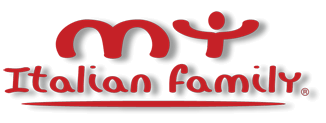Christopher Columbus and his Mysterious Family Tree...

Christopher Columbus (Cristoforo Colombo), the man who changed the size and shape of the world, was certainly an explorer, an entrepreneur, a scientist and a hero for many, but who was he really? Many claimed he was French, Spanish from Catalonia, Spanish from Galicia, Portuguese, Greek, English, German, and yes Italian.
Tradition or simply popular belief claim he was born in Genova possibly in 1451, the son of a simple tailor Domenico Colombo and his legitimate wife Susanna Fontanarossa. Later in life, Christopher chose to set sail first to Portugal and then Spain. It is in Spain that he was finally heard by the Queen Isabella who would fund the trip that would lead him to the discovery of the New World.
Today Spain is claiming that indeed the "Ilustrisimo y distringuido voron, Don Cristobal Colon" was of Spanish descent; born in Felanitz (Island of Majorca), he was the son of Margalida Colon and the prince Carlos De Viana. A theory that may be very difficult to prove even with the help of modern science; nobody really knows where exactly the body of Colombo is buried today. Originally kept in Seville, the grave was later moved to Santo Domingo (the Island Hispaniola that he had been first to discover), then to Cuba and then after Spain lost all these colonies, the remains, or possibly only part of them were finally returned to Seville.

If the Spanish are still debating on Colombo's true descent, Italy is quarreling over his origins as well. Not long ago, two professors from the University of Pavia claimed that Colombo had noble origins and even descended from a Pope (Innocenzo VIII); he was later adopted by Domenico Colombo, our tailor from Genoa. This claim comes from the same university which presumably Cristoforo attended in 1451, where he would learn and excel in geometry, calculus, drawing, cartography, but which brings up another point: Cristoforo's father, being a simple tailor, how could he afford to send his son to the University of Pavia, also known as "Studium Ticinese". In the 1400s very few people would be able to attend such prestigious athenaeums.
There could be an explanation, which would make our Cristoforo Colombo descend from a noble and wealthy family from Casale Monferrato, specifically from Cuccaro where they owned land. Based on these assumptions, this would be Cristoforo's family tree, which is certainly far from being exact:

An other fact that could prove this theory to be correct is that his mentor while at sea was a relative with the same name, the Admiral Cristoforo Colombo, who was Lancia (his grandfather)'s brother.
In 1520, 14 years after Colombo's death, his son Fernando traveled to Genoa to look for living relatives, but could not find any. He had to travel to nearby towns such as Cogoleto and Piacenza where other branches of the Colombo family listed above had settled.
He probably did not know that his father's family originally came from Cuccaro, either because his father, as reserved as he was, never told him, or because it simply was not true.
Unfortunately no documentation is available because all church documents from 1400 to 1500 maintained in the Bishop's Archive of Aqui, where Cuccaro depended at the time of Colombo's birth were destroyed without a plausible reason.
If Christopher Columbus' family tree will remain a mystery possibly forever, we have the possibility today to learn ours. Learning about our origins can be an important legacy to our children, after all memories are not used to remember the lost time, but to start again, knowing that losing our roots inevitably leads to a loss in our identity as people who live, think and love.
The photo (above) shows the paternal house where Christopher Columbus spent his childhood (from 1455 when he was 4 years old to1470); it is located in Vico Dritto Ponticello (now known as Piazza Dante) right outside Porta Soprana in Genoa.

